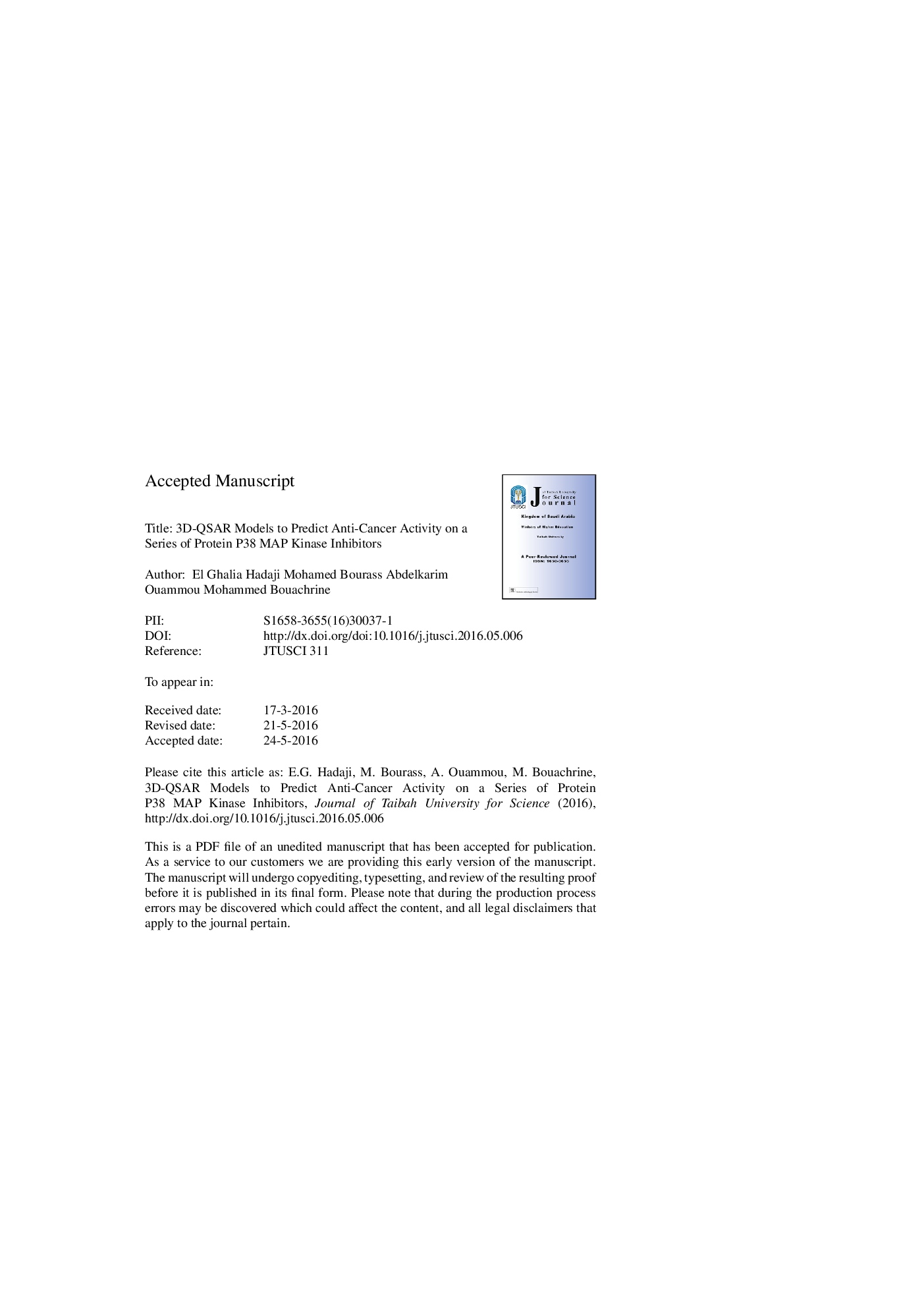| Article ID | Journal | Published Year | Pages | File Type |
|---|---|---|---|---|
| 5143519 | Journal of Taibah University for Science | 2017 | 31 Pages |
Abstract
Protein kinases are essential components of various signaling pathways and represent attractive targets for therapeutic interventions. Kinase inhibitors are currently used to treat malignant tumors, as well as autoimmune diseases, due to their involvement in immune cell signaling. In this study, three-dimensional quantitative structure-activity relationship (3D-QSAR) analyses, including Multiple Linear Regression (MLR), Partial Least Squares (PLS), Multiple Non-Linear Regression (MNLR), Artificial Neural Network (ANN) and cross-validation analyses, were performed on a set of P38 MAP kinases as anti-cancer agents. This method, which is based on molecular modeling (molecular mechanics, Hartree-Fock (HF)), was used to determine the structural parameters, electronic properties, and energy associated with the molecules we examined. MLR, PLS, and MNLR analyses were performed on 46 protein P38 MAP kinase analogs to determine the relationships between molecular descriptors and the anti-cancer properties of the P38 MAP kinase analogs. The MLR model was validated by the external validation and standardization approach. The ANN, given the descriptors obtained from the MLR, exhibited a correlation coefficient close to 0.94. The predicted model was confirmed by two methods, leave-one-out (LOO) cross-validation and scrambling (or Y-randomization). We observed a high correlation between predicted and experimental activity, thereby both validating and demonstrating the high quality of the QSAR model that we described.
Related Topics
Physical Sciences and Engineering
Chemistry
Chemistry (General)
Authors
El Ghalia Hadaji, Mohamed Bourass, Abdelkarim Ouammou, Mohammed Bouachrine,
